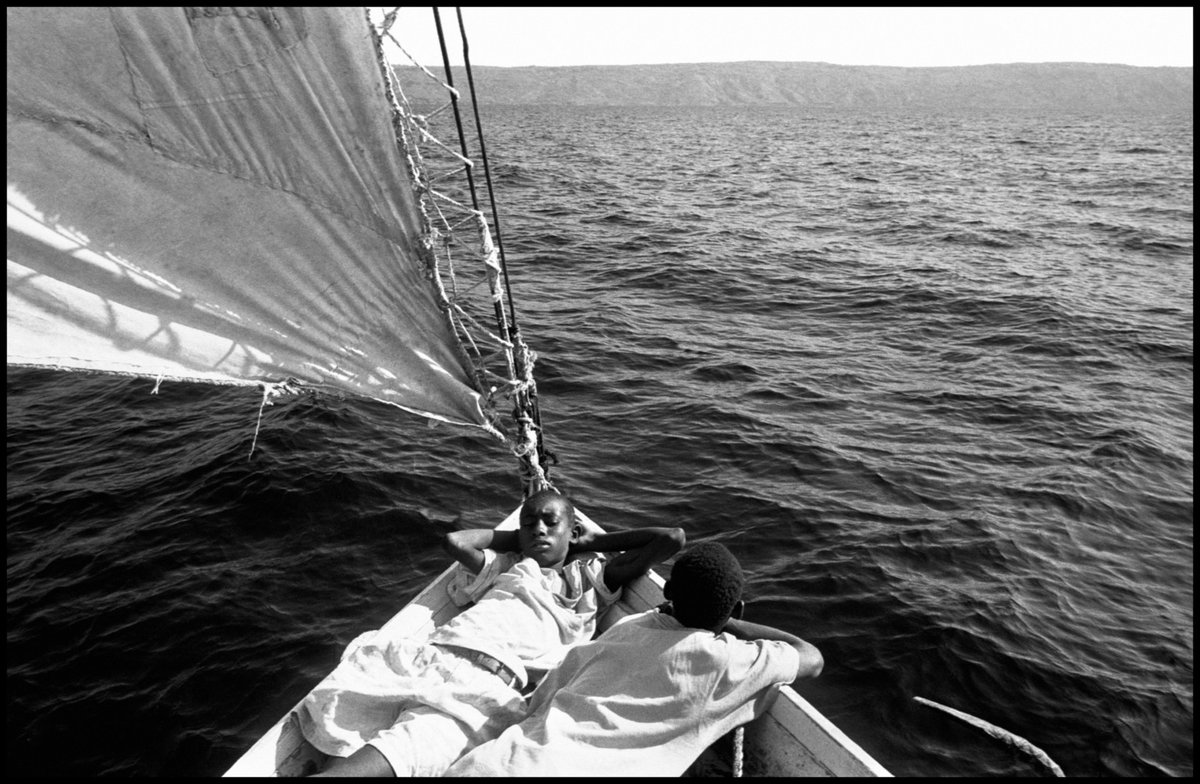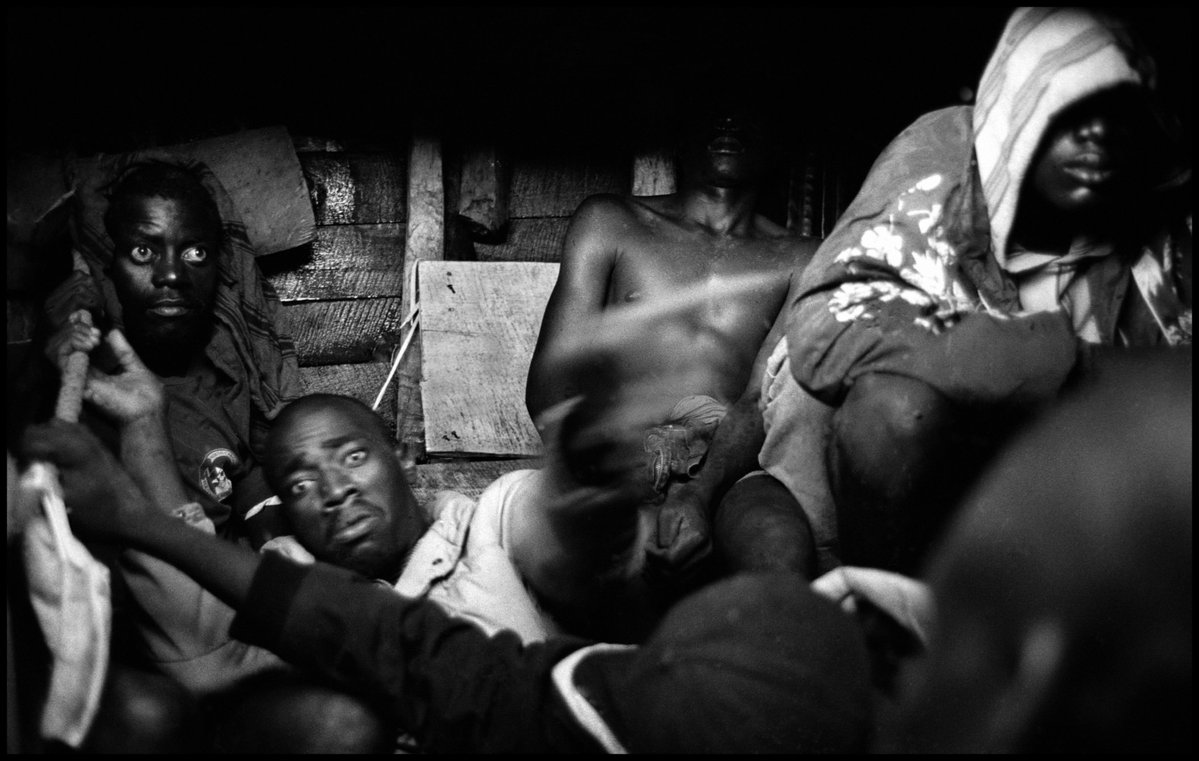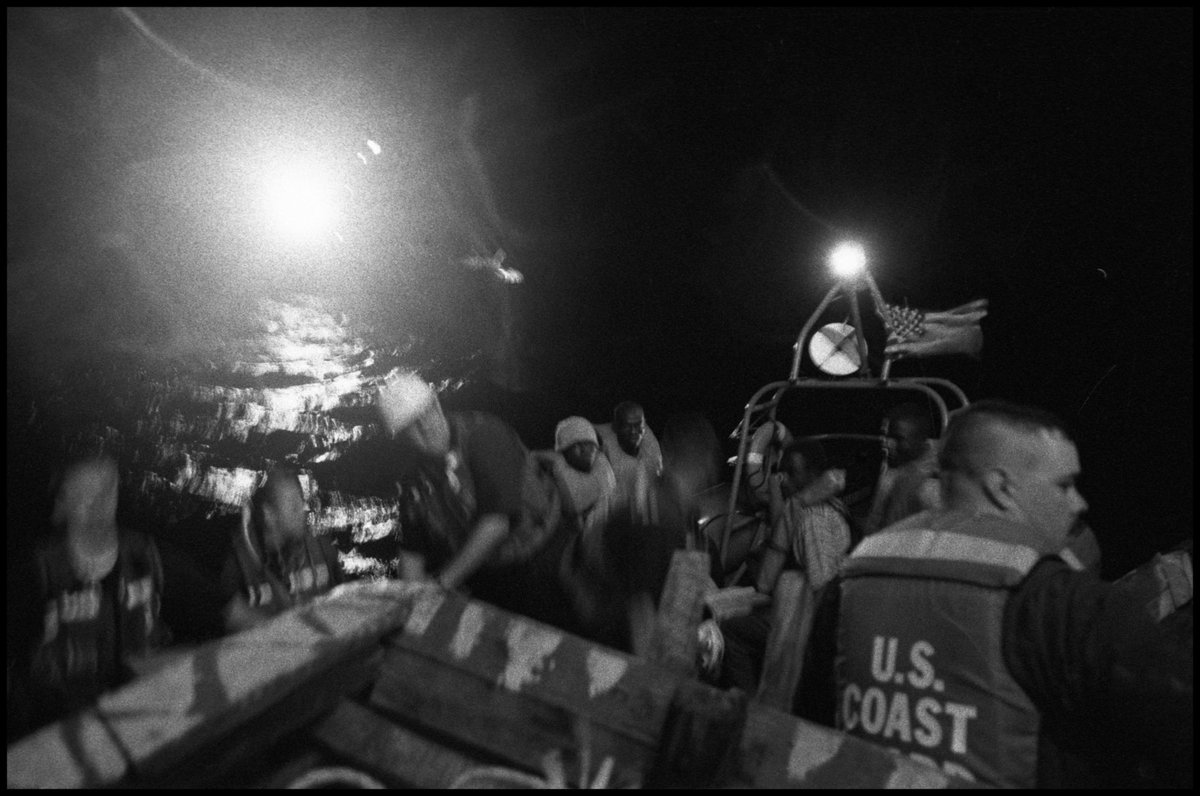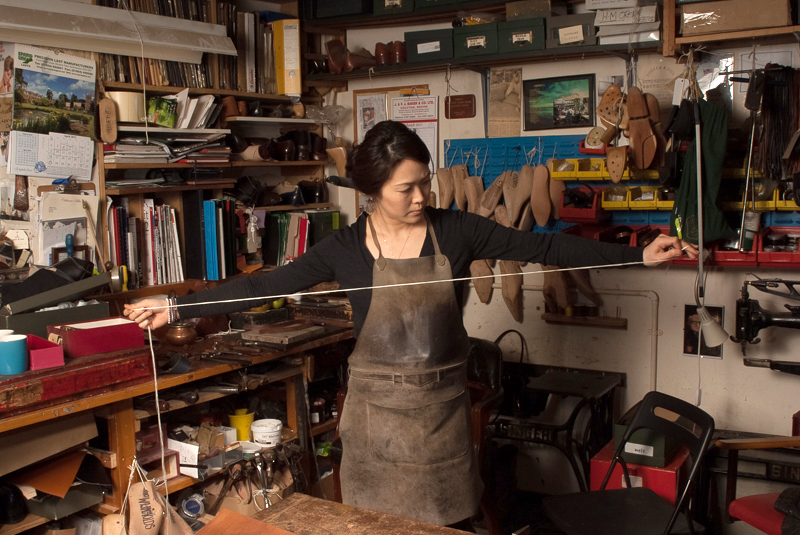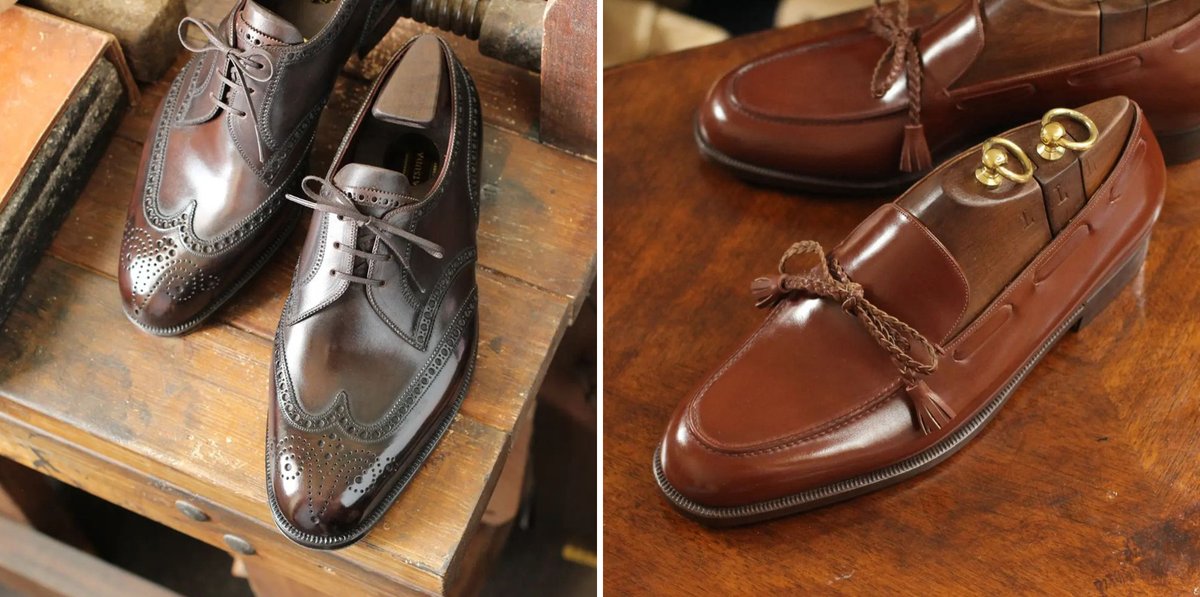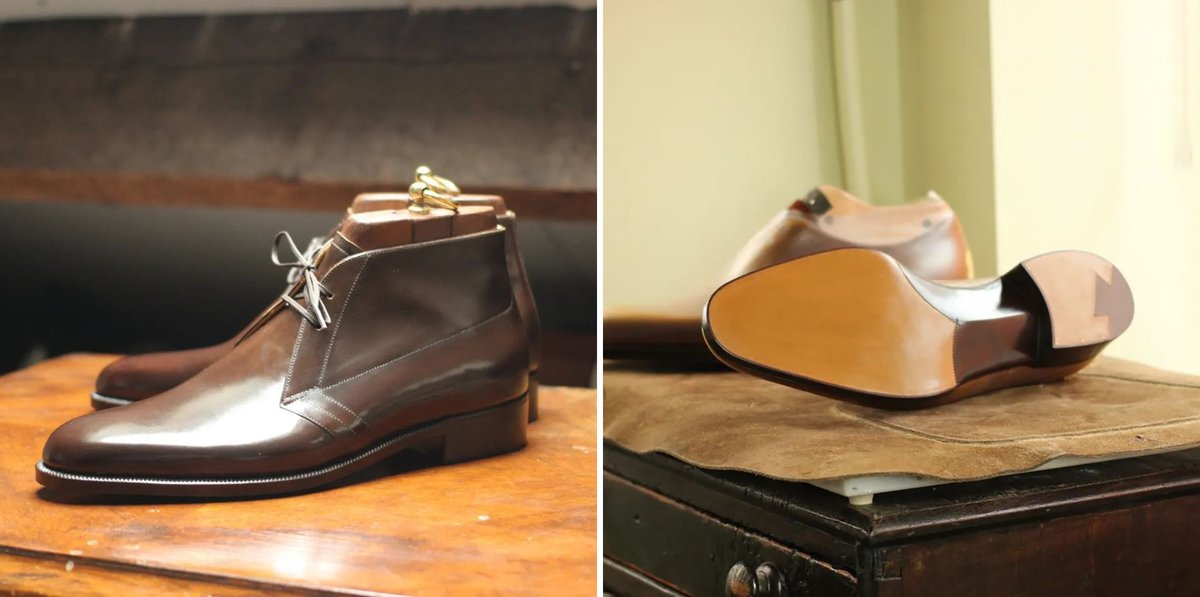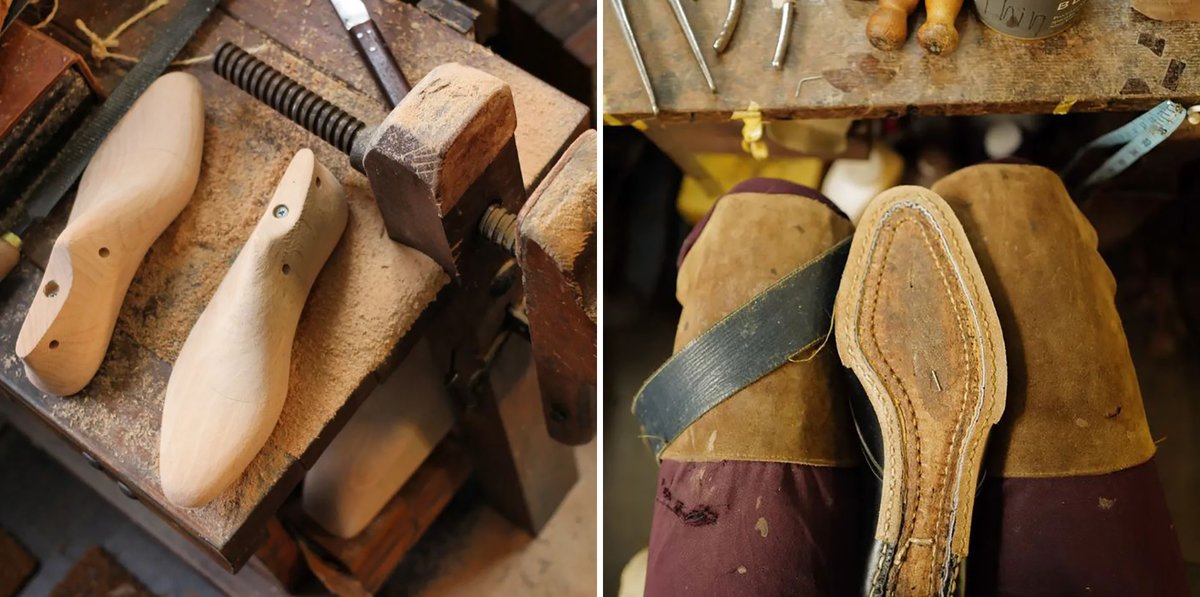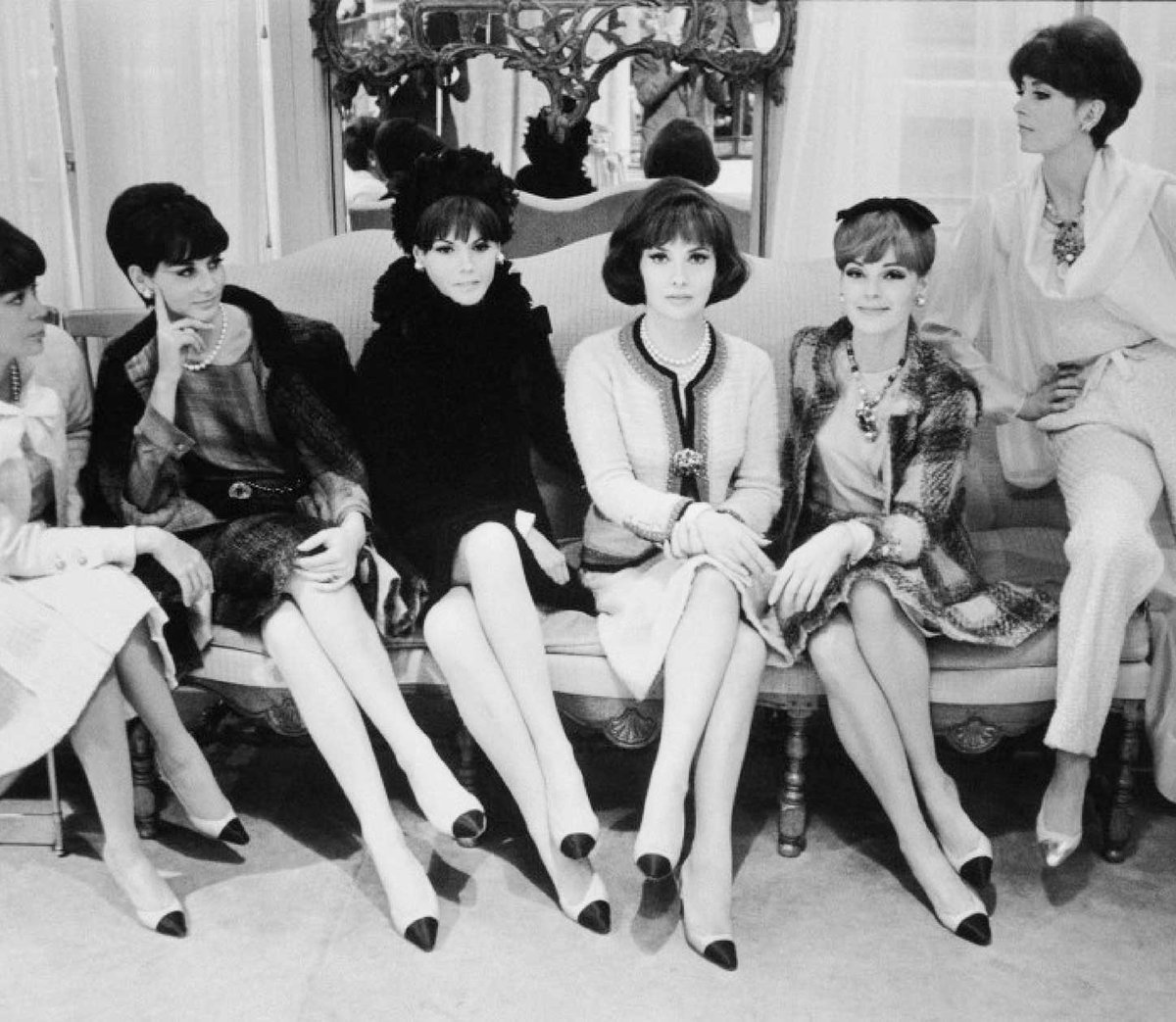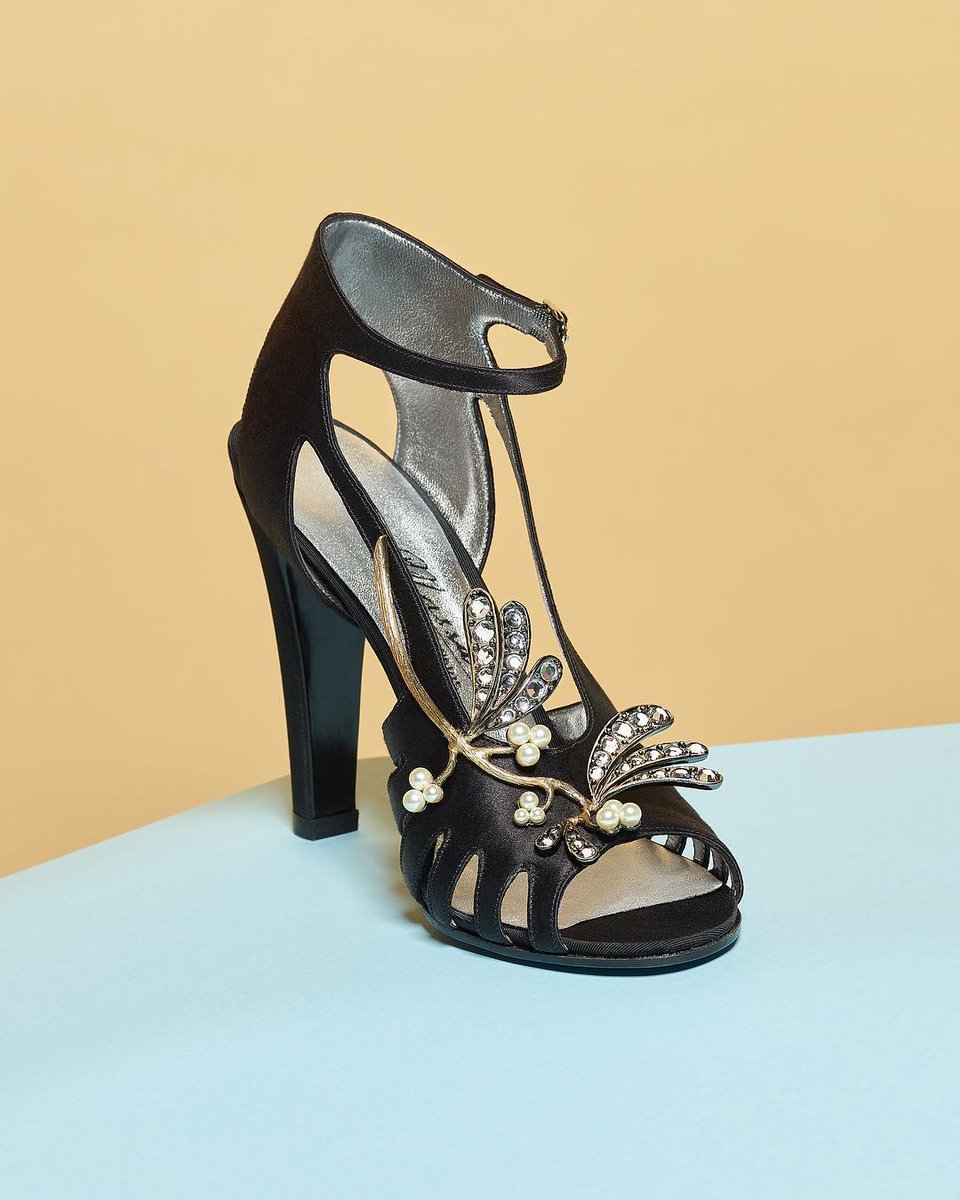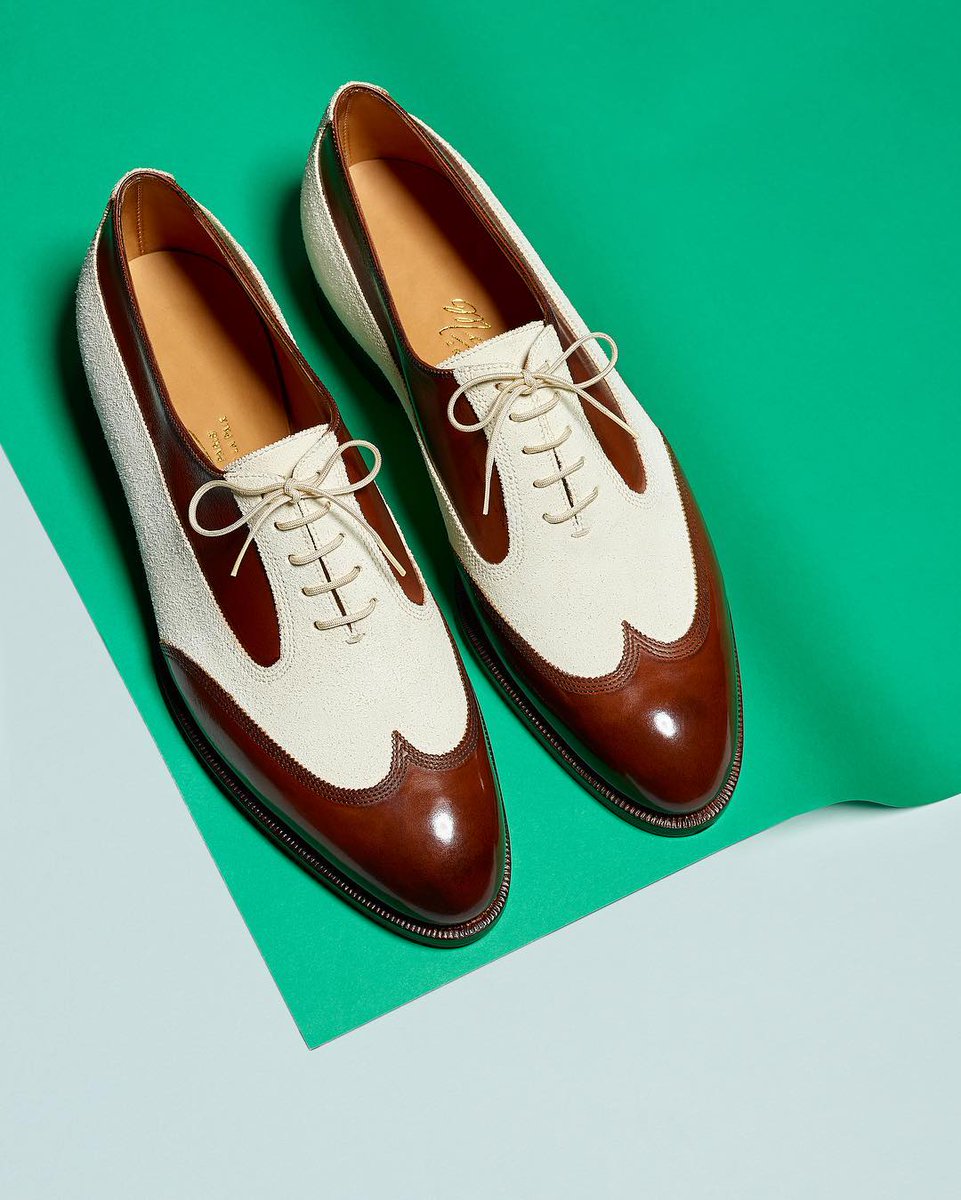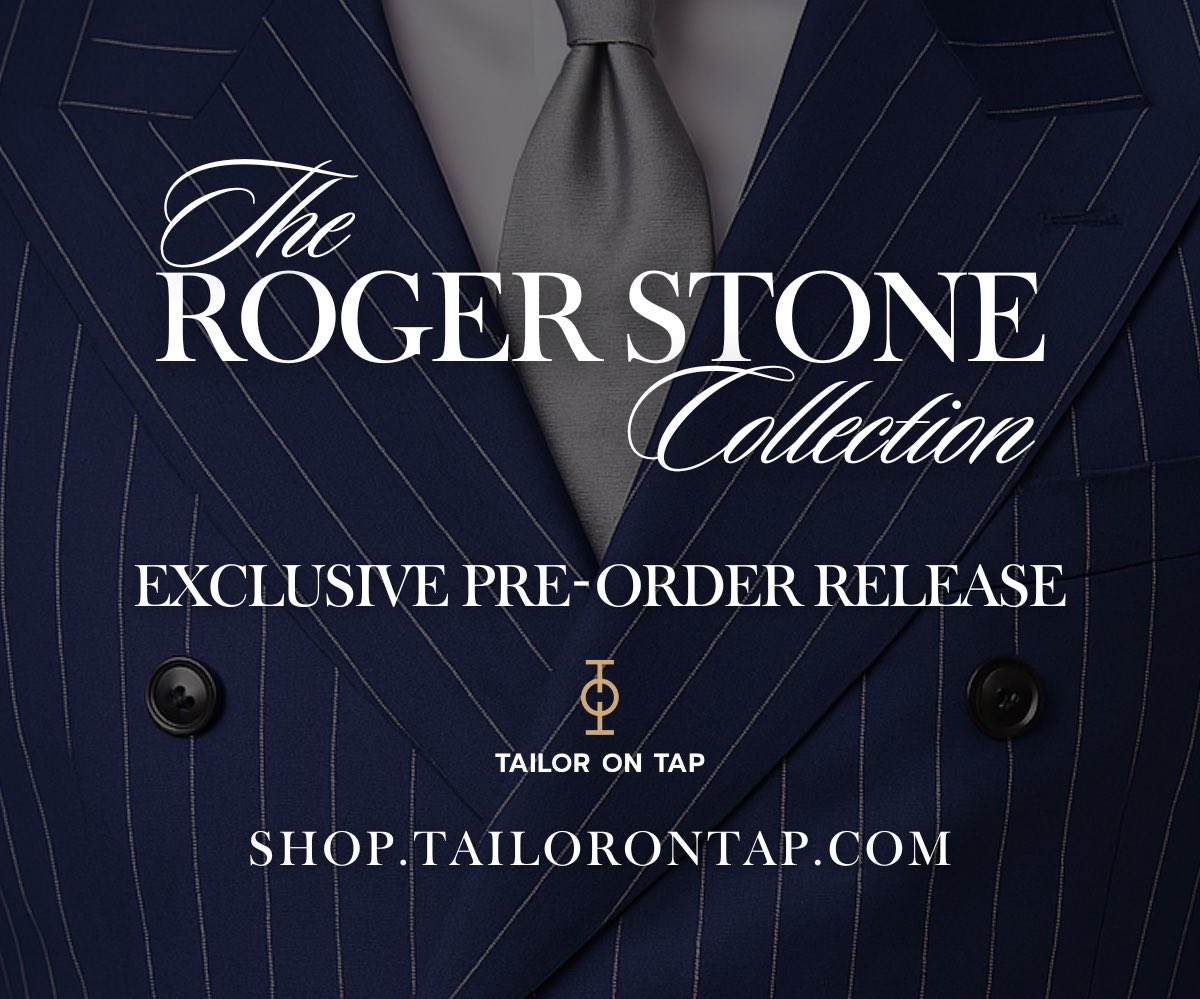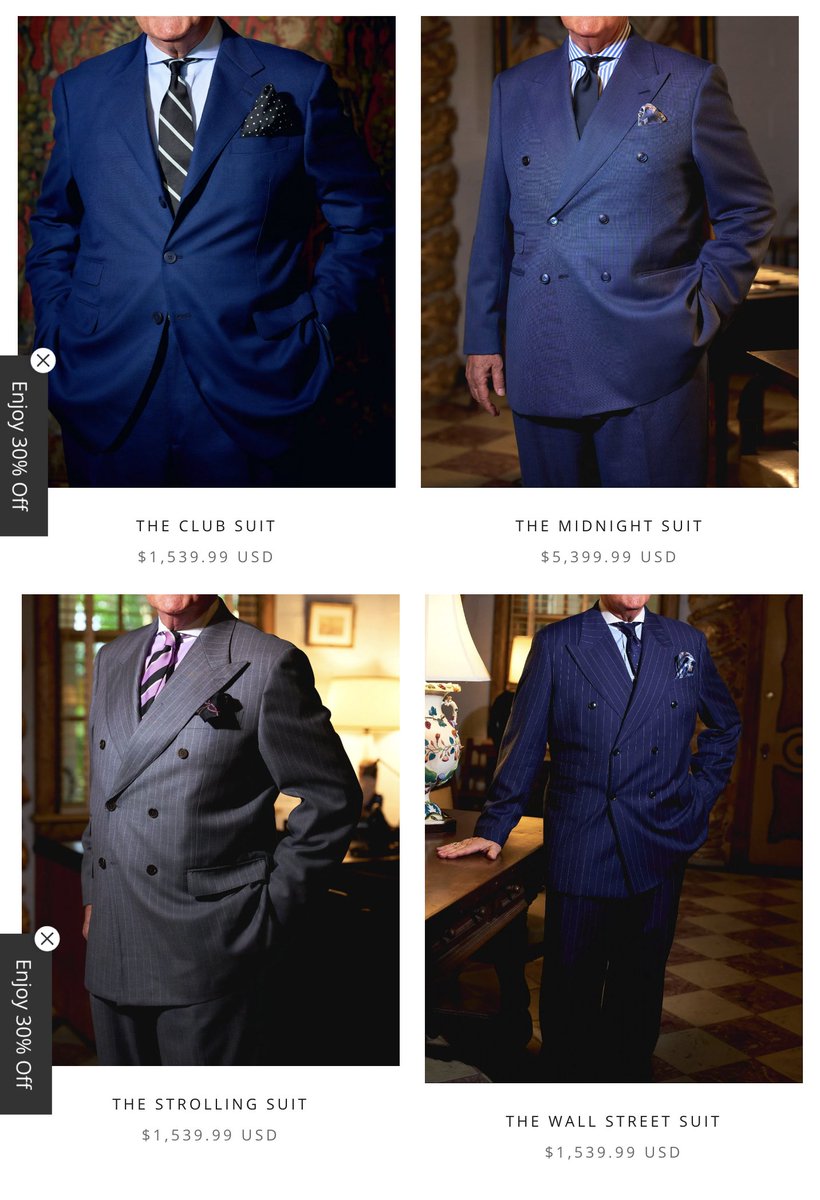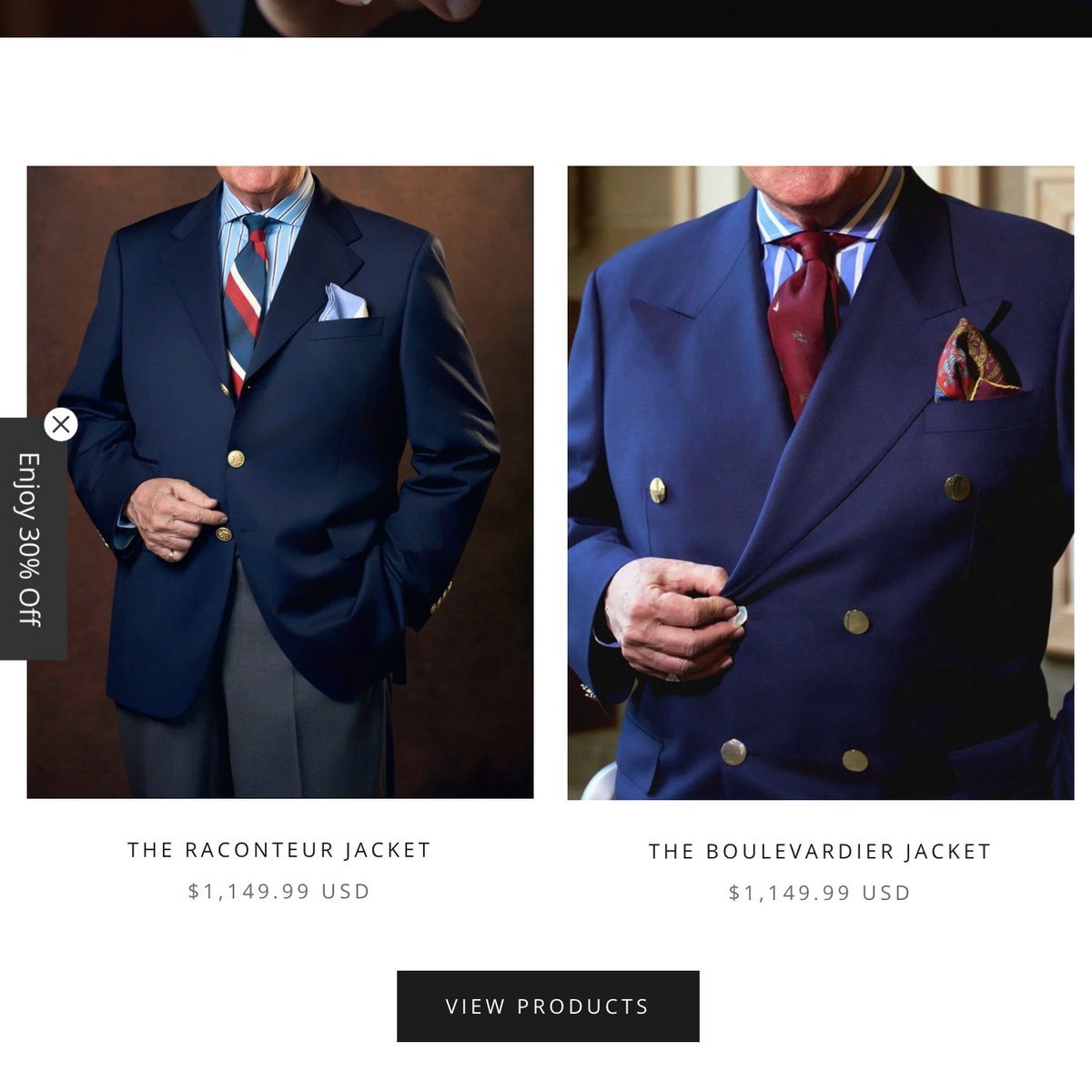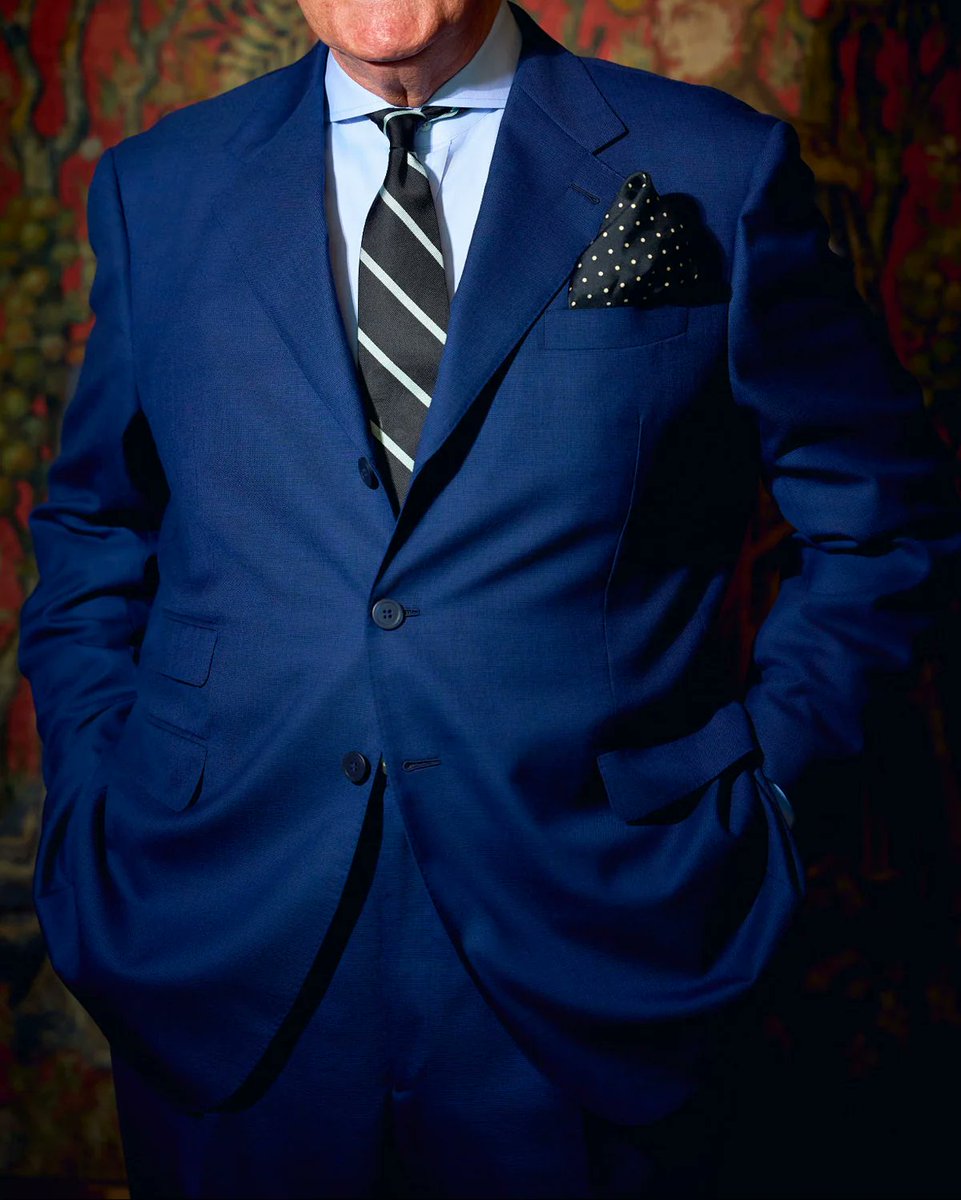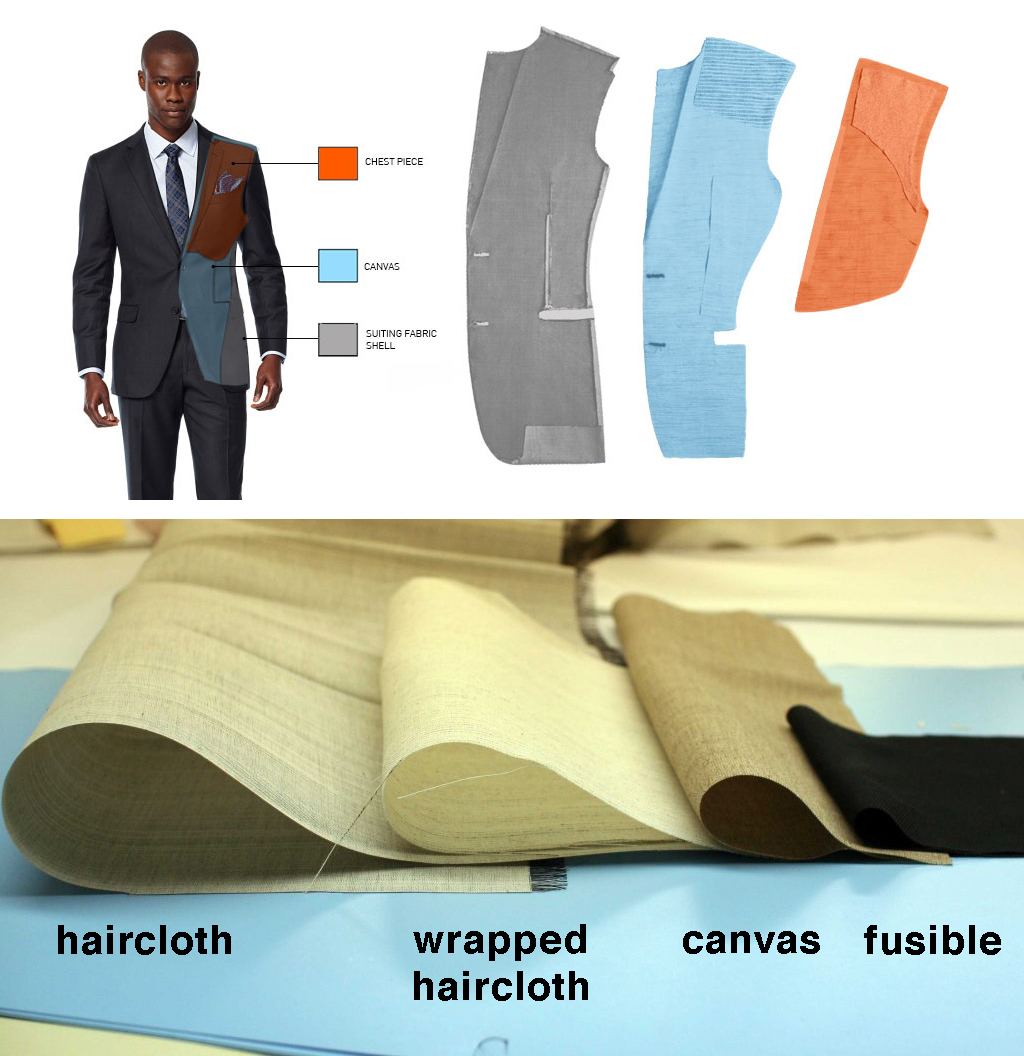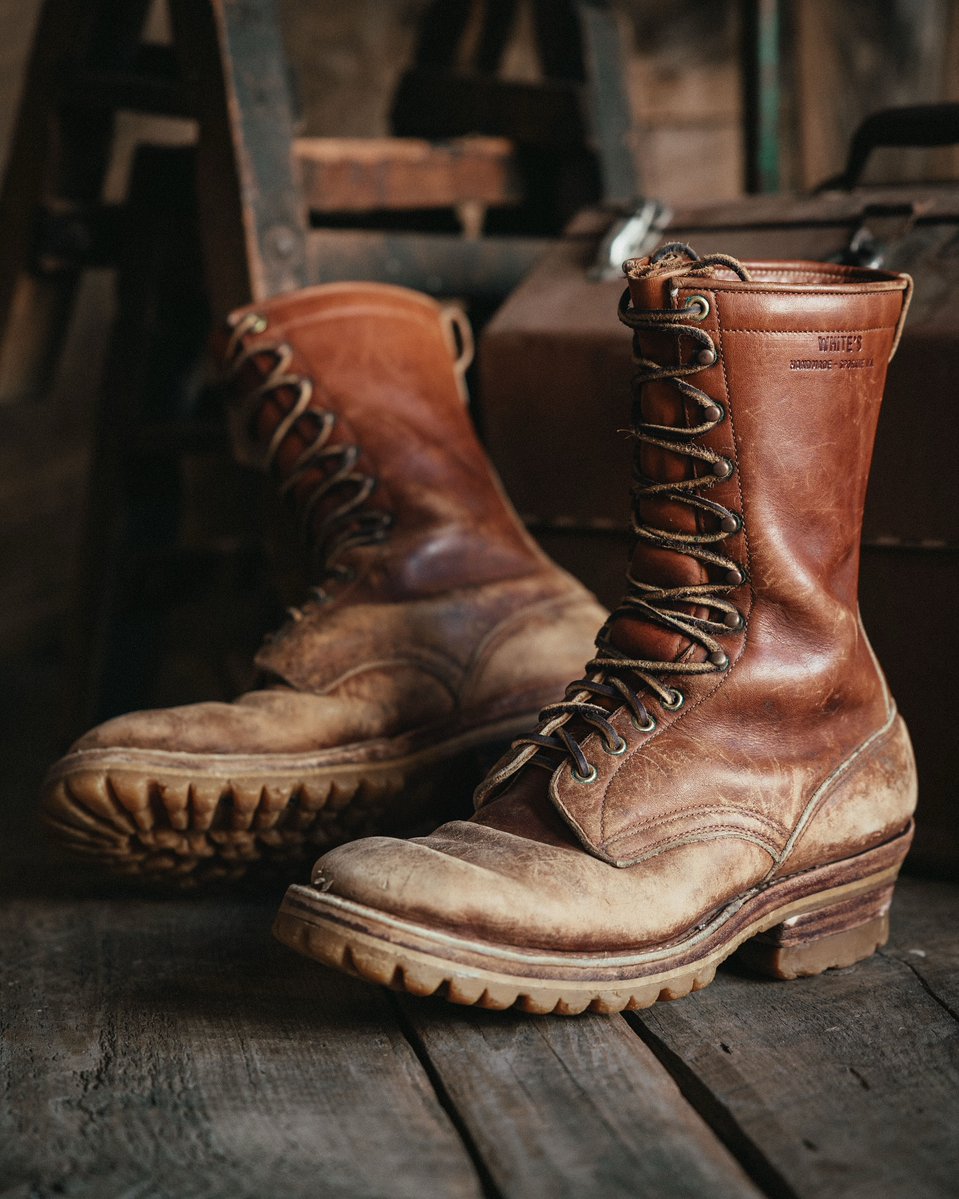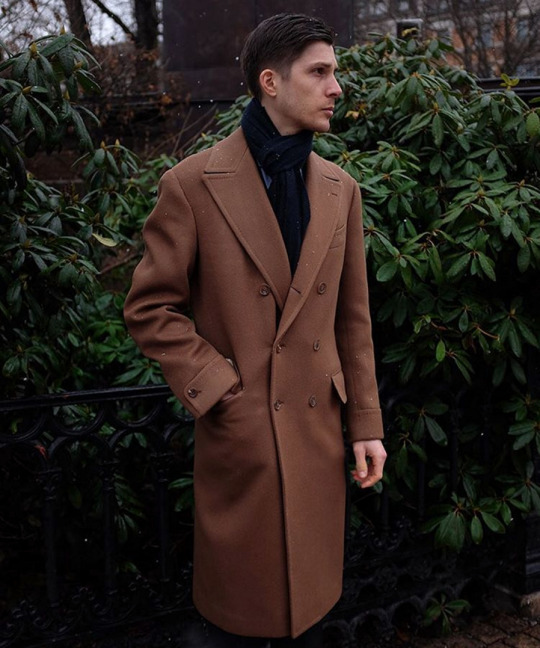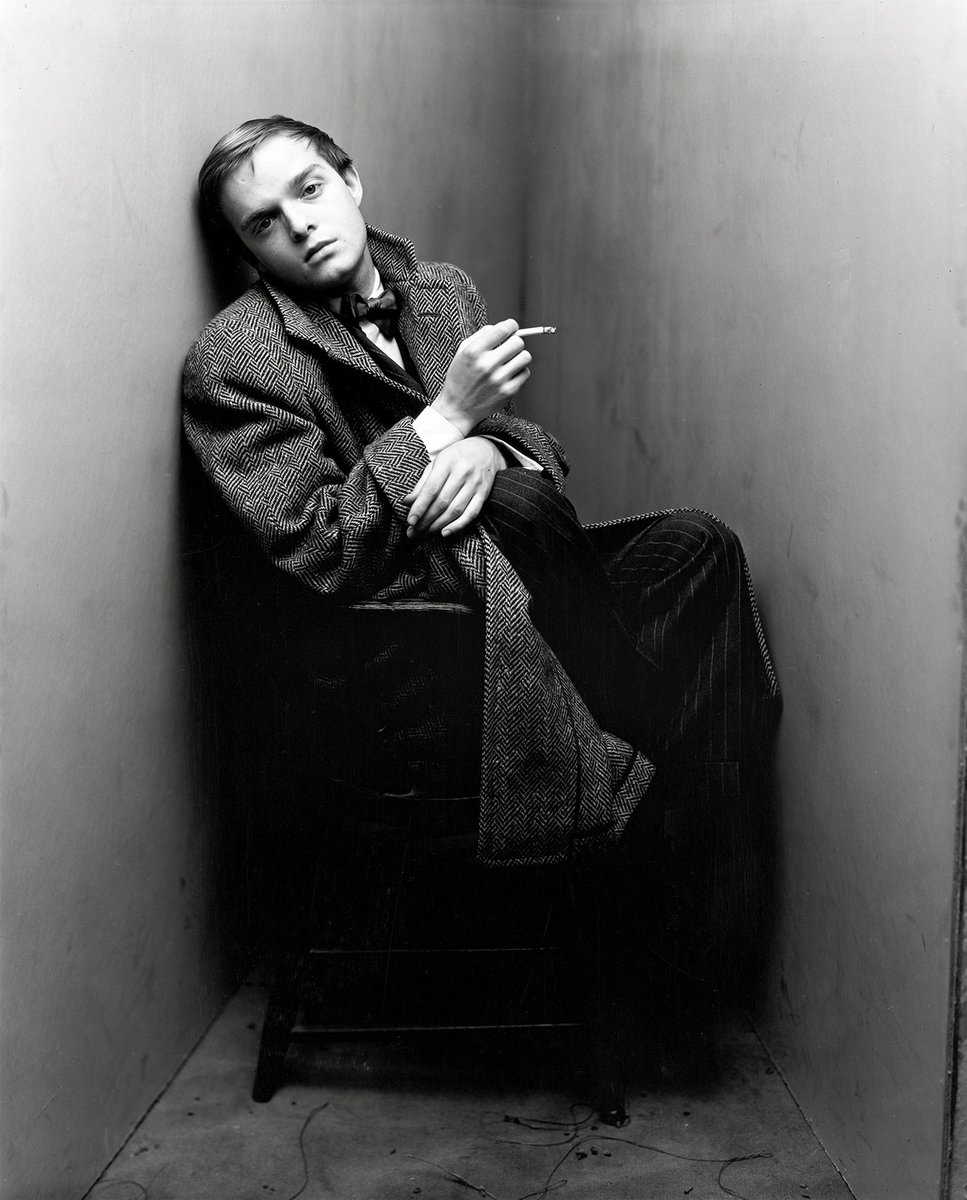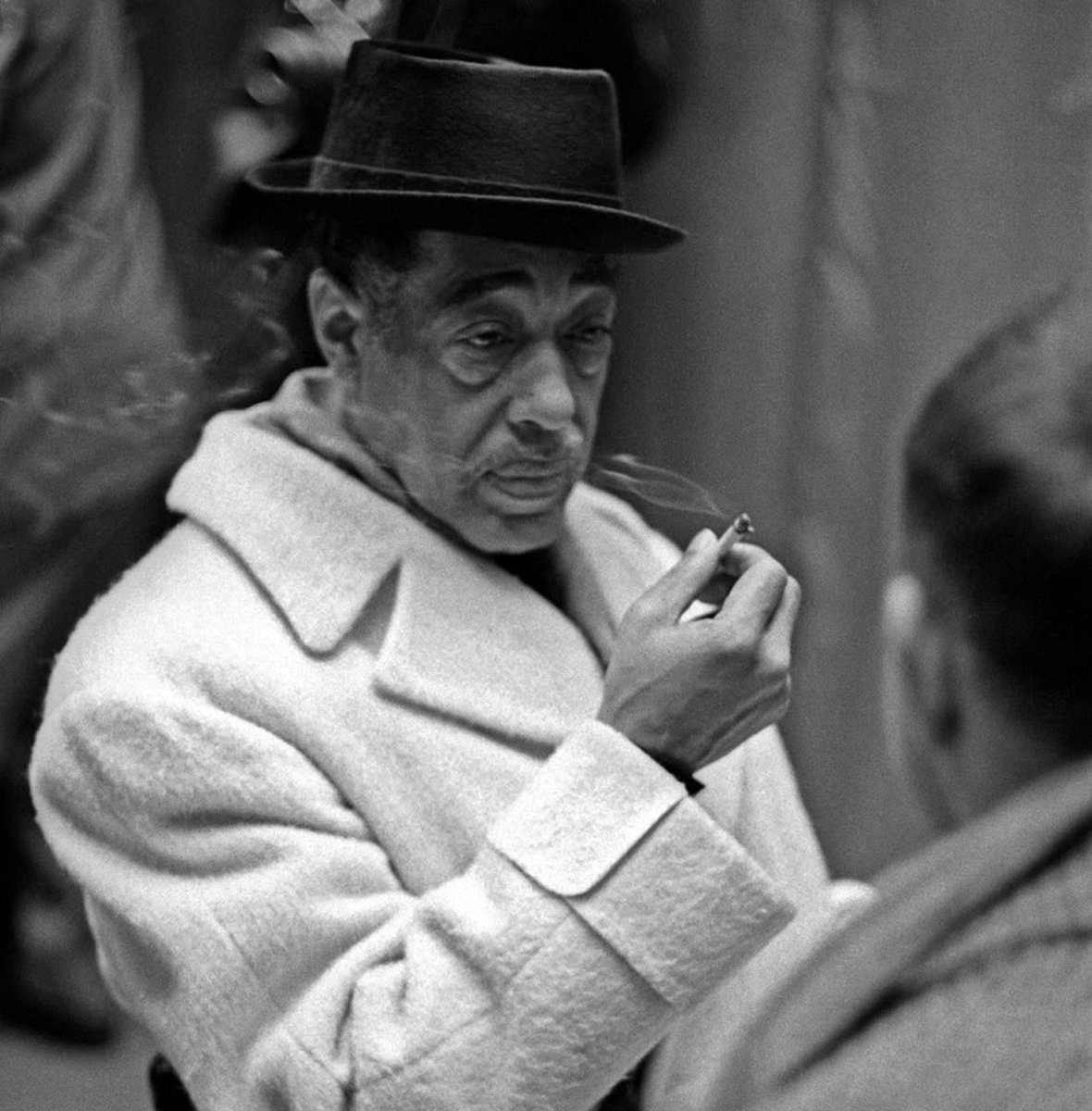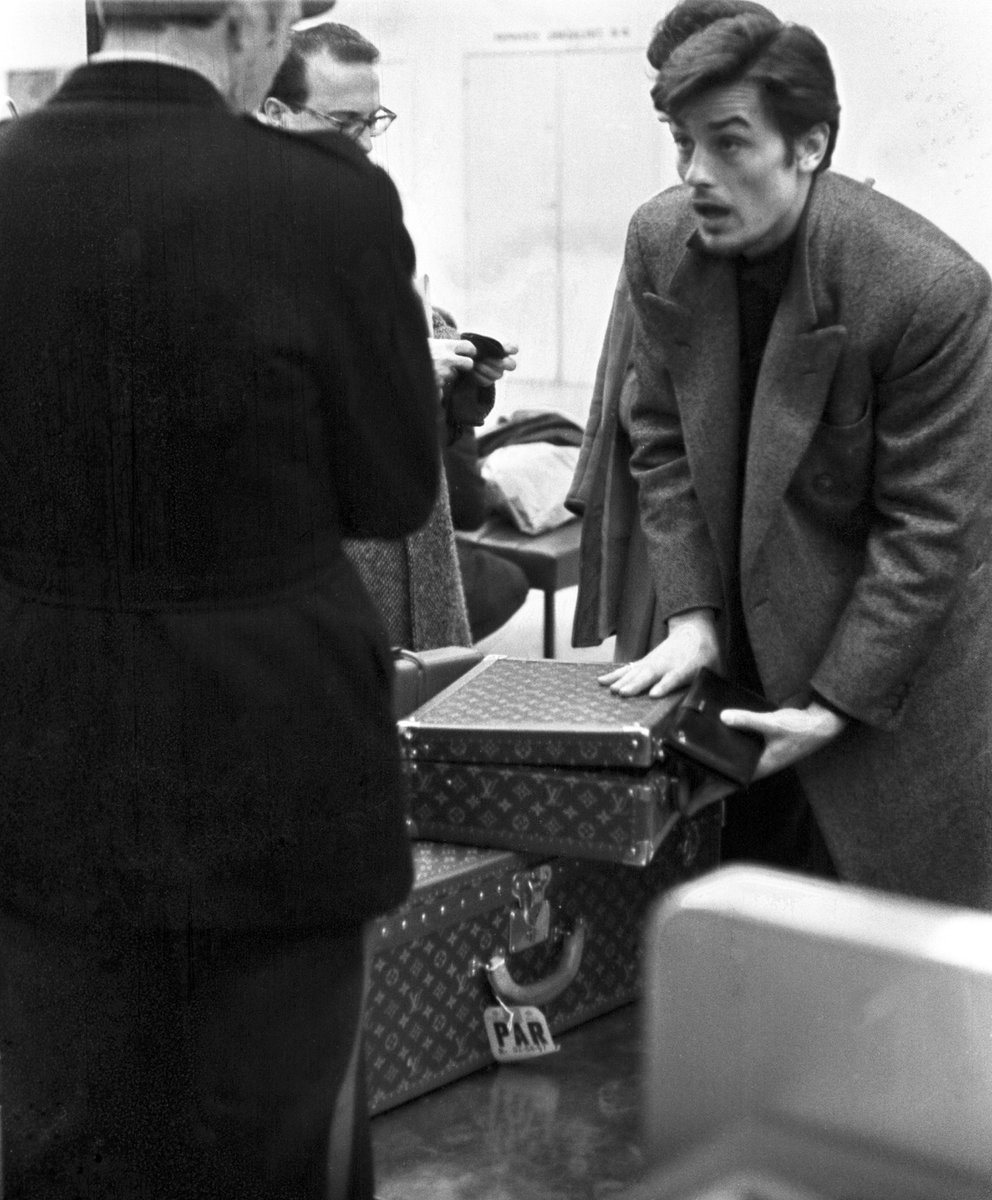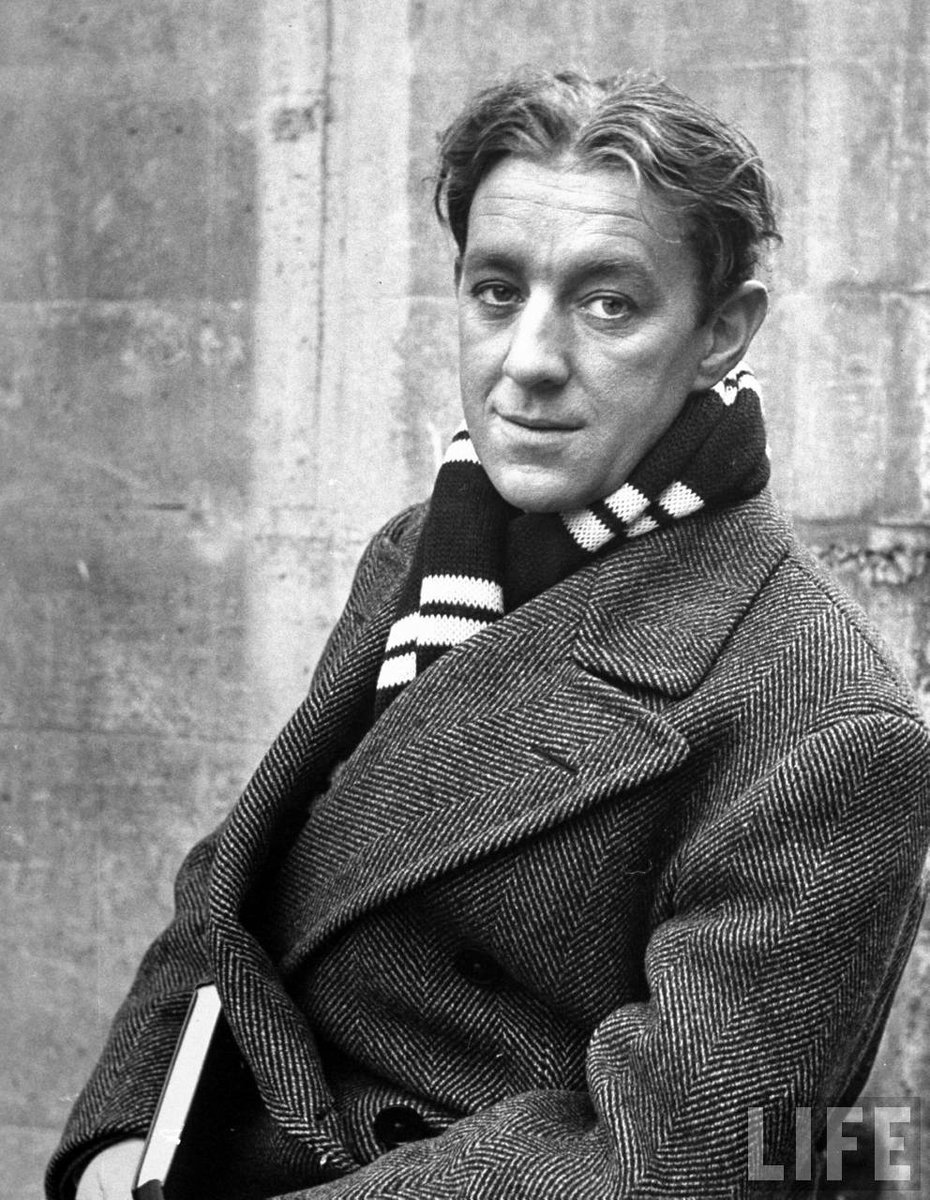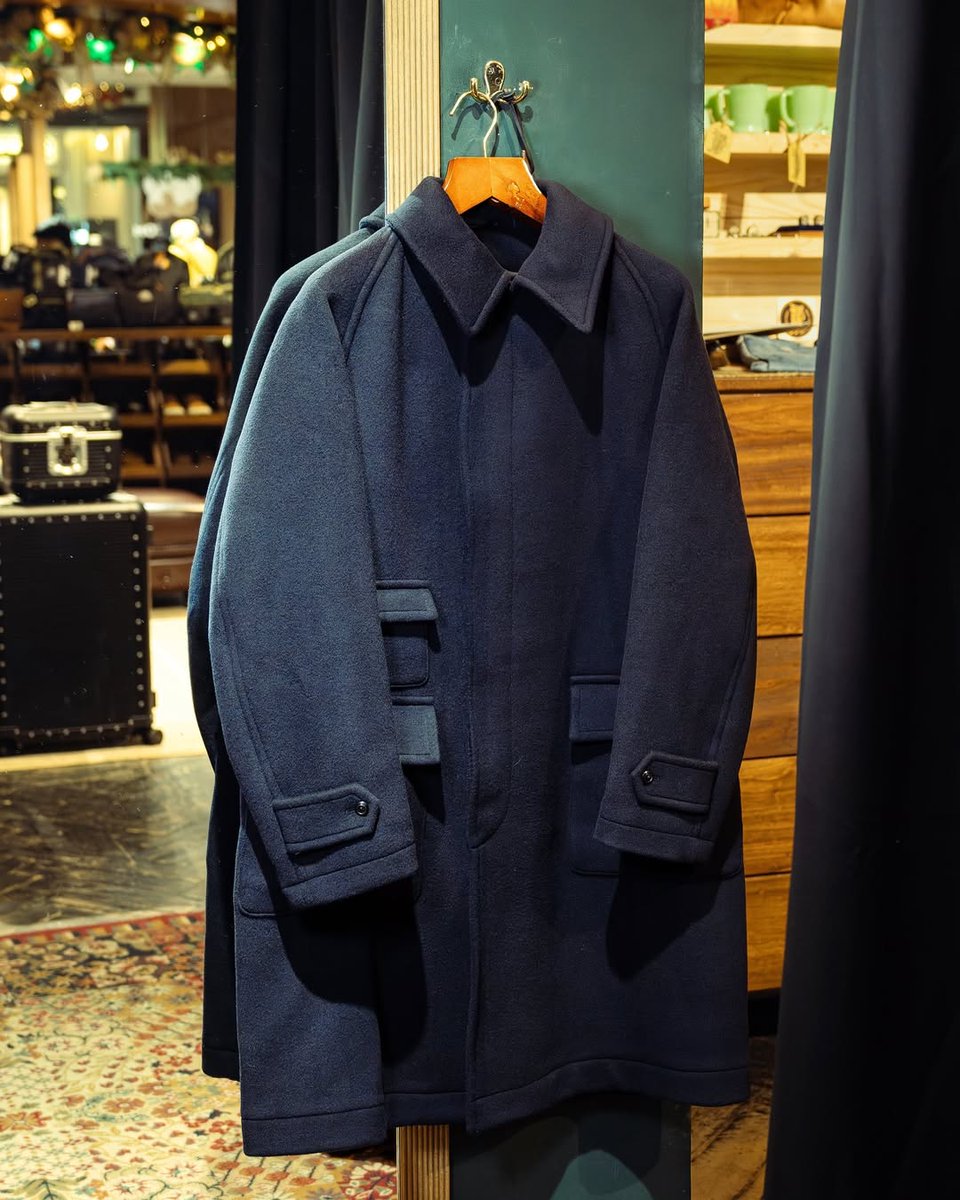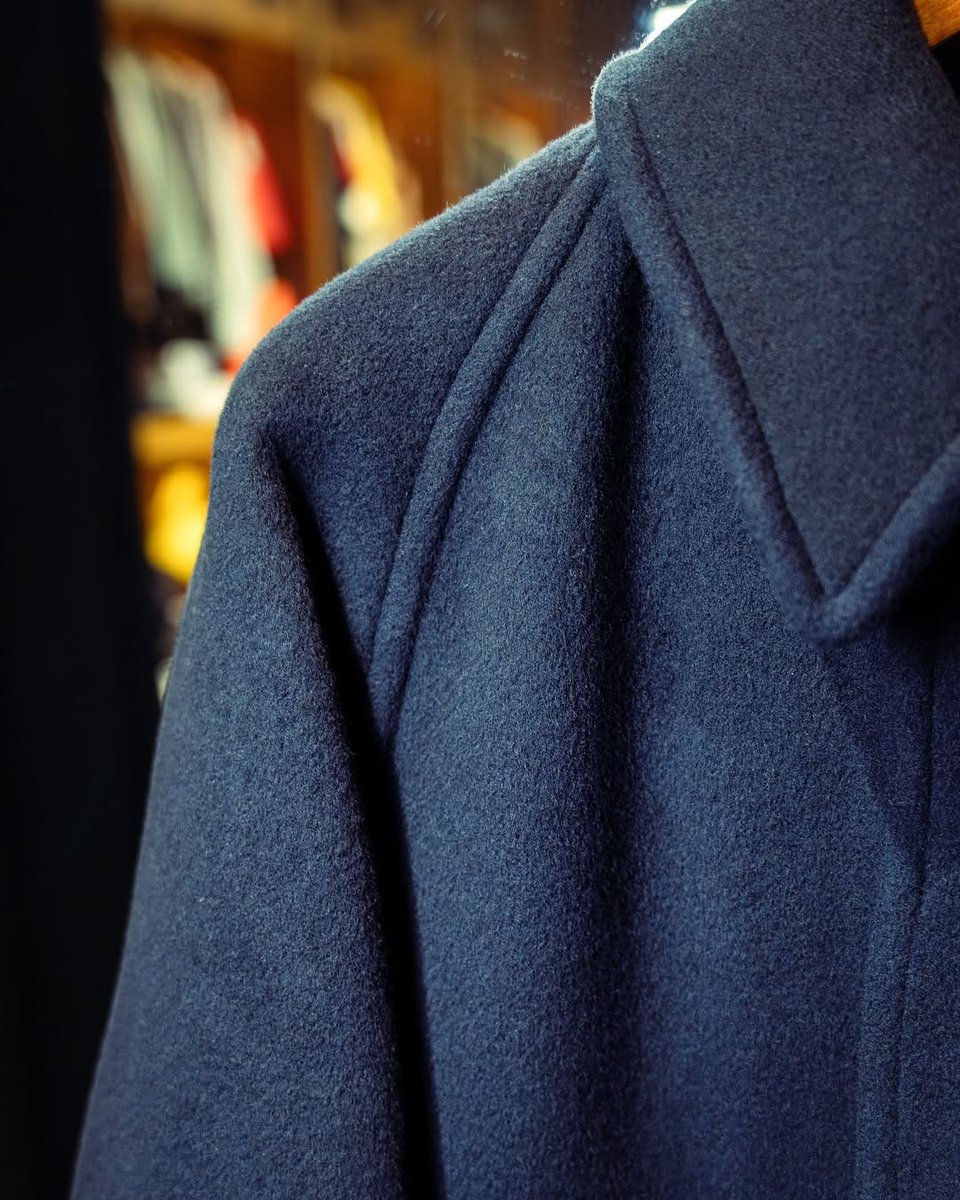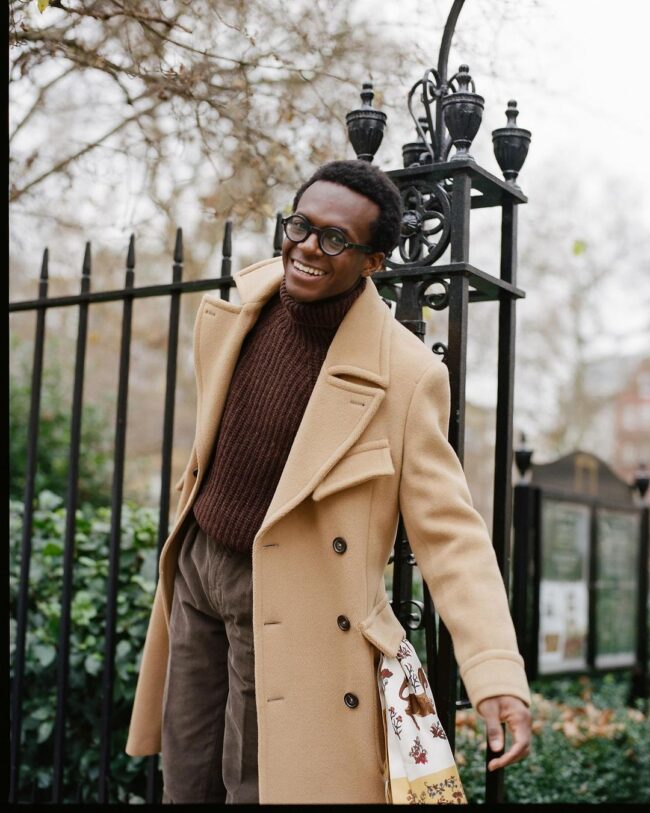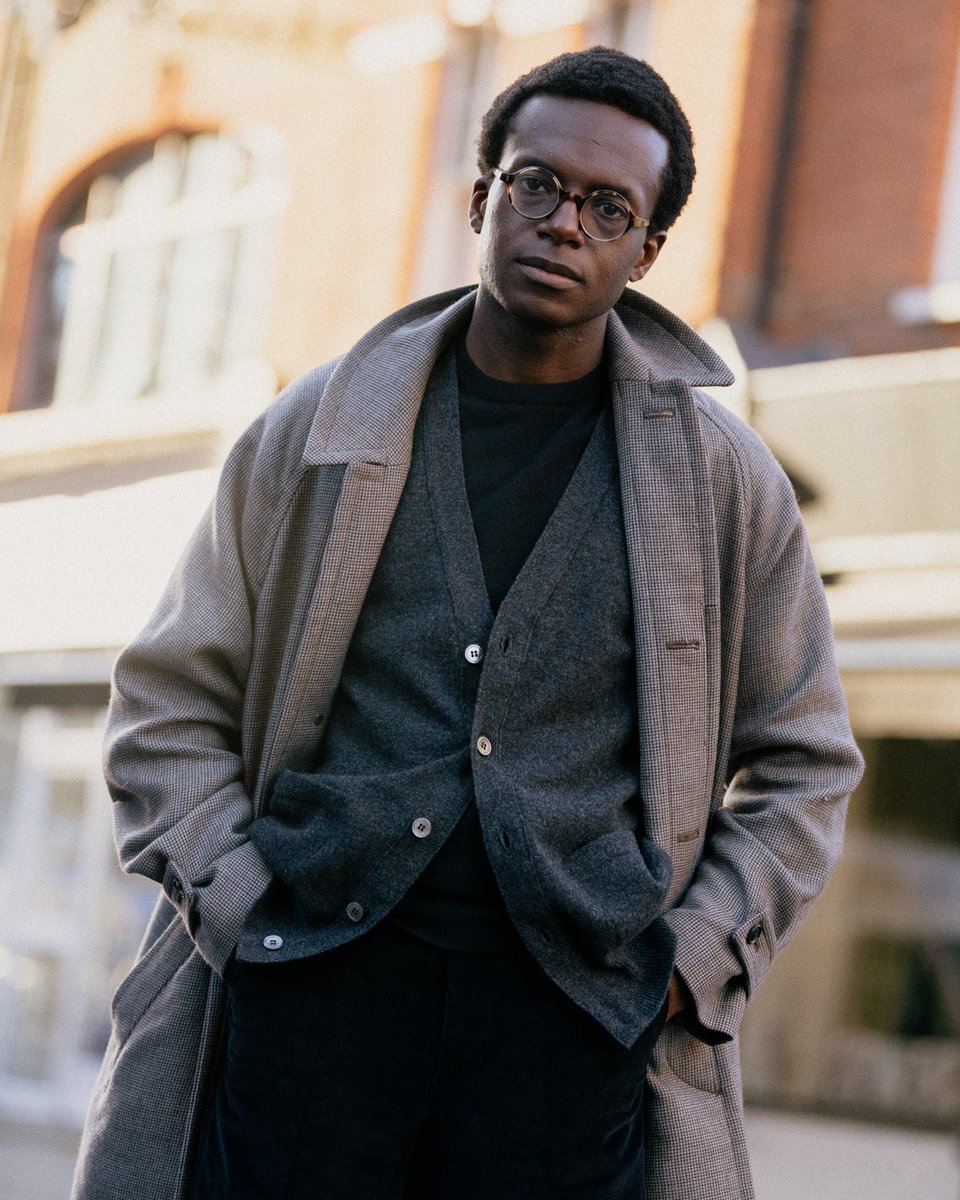This is true, but it has more to do with how his suits are constructed. Will demonstrate 🧵
https://twitter.com/MollyJongFast/status/1709295973225115942
Much of tailoring has to do with the shoulder. Many things go into the construction of a shoulder line. The most obvious is padding, which determines how built up the shoulder looks. The other element is how the sleeve has been attached to the body. 

Here are three suits with similarly sloped shoulders. They must be the same right? But when you reveal the sleeveheads, you can see how the expression changes.
Left: roped shoulder with a stronger T-shaped line
Right: soft shoulder with a rounded line
Left: roped shoulder with a stronger T-shaped line
Right: soft shoulder with a rounded line

Another element is whether the shoulder is extended or not. An extended shoulder will help you avoid that "bobblehead" effect that Molly mentioned. It can also give you a stronger V-shaped silhouette. This can be especially useful if you don't naturally have this figure. 

The problem with a very soft, extended shoulder is that the end is likely to droop over time. The older man here is the head of Rubinacci in Naples, one of the most respected bespoke tailoring houses. Notice that the end of the shoulder droops a little. This is the extension. 

Many men go into a suit shop and have a very clinical view of how a suit should fit. They think, "OK, does the shoulder seam sit on my shoulder bone?" "Does the body hug my body?"
But good tailoring is not meant to recreate the lines on your body. It should flatter your body.
But good tailoring is not meant to recreate the lines on your body. It should flatter your body.
Here, we see a man in two different coats. Notice how different he looks. The very soft coat on the left gives the impression of a diminutive figure. The coat on the right is a little built up: slightly more padding, a bit of roping, and an extended shoulder. IMO, looks better 

Gaetz has the same issue with his suits. He buys very soft suits with shrunken silhouettes. So here, we see three things:
1. A very soft, unpadded shoulder
2. Sleevehead has little ridging, so the shoulder line curves off the body and goes into the sleeve
3. No extension
1. A very soft, unpadded shoulder
2. Sleevehead has little ridging, so the shoulder line curves off the body and goes into the sleeve
3. No extension

This is not an apples-to-apples comparison because we're comparing two different bodies. But see how Gaetz is wearing that same silhouette. Bobblehead effect. Karl is wearing a slightly extended shoulder with a roped sleevehead. No bobblehead effect.
Not everyone will want to wear a roped or extended shoulder. Much depends on your body type. But a lot of tailoring nowadays is very slim and shrunken with no padding underneath. The effect is something like what you see below, which is not flattering on many guys. 

Will add a little more for those curious about tailoring. But the following will not be relevant if you buy ready-to-wear; it's only applicable if you get clothes custom-made (and primarily through a bespoke process, rather than made-to-measure).
Every seam has a bit of seam allowance because you can't sew fabric right at the edge. If you look inside your trousers, you'll see the seam allowance running along the inside leg. If you have partially lined suit jackets or sport coats, the back seam will also show the seam allowance. Typically, both of these seams are pressed open.
The area where the sleeve attaches to the shoulder is the same. The seam allowance looks something like picture 1. The sleeve here is green. The shoulder is red. The black line is the stitching that joins these two pieces.
Once they're joined, the tailor has to figure out what to do with the seam allowance. They can press it open, as they do with the back seam on your coats or the leg seam on your trousers. That will push the sleeve's seam allowance towards the sleeve. And the shoulder's seam allowance towards the neck. See picture 2.
Or the tailor can press both seam outlets towards the neck. Depending on how the sleeve is cut, inserted, and finished, this can create the very rounded shoulder line and waterfall effect you see in picture 3. Note how the sleeve basically drops right where the sleeve seam starts. This creates a very rounded look.
If you are working with a tailor and they're making a very soft shoulder, and you want a bit of shoulder extension, you can ask them to press both seam outlets towards the sleeve. This will create a bit of support for the sleeve and "prop" up the material, creating the illusion of an extended shoulder without actually changing the shoulder measurement. Italian tailors call this mappina. See picture 4.
This avoids the droopy shoulder that can sometimes happen with a very soft, extended shoulder. You won't get that much of an extension, but you will get a little. For guys with very narrow or rounded shoulders, it can give you a more flattering silhouette.




Every seam has a bit of seam allowance because you can't sew fabric right at the edge. If you look inside your trousers, you'll see the seam allowance running along the inside leg. If you have partially lined suit jackets or sport coats, the back seam will also show the seam allowance. Typically, both of these seams are pressed open.
The area where the sleeve attaches to the shoulder is the same. The seam allowance looks something like picture 1. The sleeve here is green. The shoulder is red. The black line is the stitching that joins these two pieces.
Once they're joined, the tailor has to figure out what to do with the seam allowance. They can press it open, as they do with the back seam on your coats or the leg seam on your trousers. That will push the sleeve's seam allowance towards the sleeve. And the shoulder's seam allowance towards the neck. See picture 2.
Or the tailor can press both seam outlets towards the neck. Depending on how the sleeve is cut, inserted, and finished, this can create the very rounded shoulder line and waterfall effect you see in picture 3. Note how the sleeve basically drops right where the sleeve seam starts. This creates a very rounded look.
If you are working with a tailor and they're making a very soft shoulder, and you want a bit of shoulder extension, you can ask them to press both seam outlets towards the sleeve. This will create a bit of support for the sleeve and "prop" up the material, creating the illusion of an extended shoulder without actually changing the shoulder measurement. Italian tailors call this mappina. See picture 4.
This avoids the droopy shoulder that can sometimes happen with a very soft, extended shoulder. You won't get that much of an extension, but you will get a little. For guys with very narrow or rounded shoulders, it can give you a more flattering silhouette.




• • •
Missing some Tweet in this thread? You can try to
force a refresh






